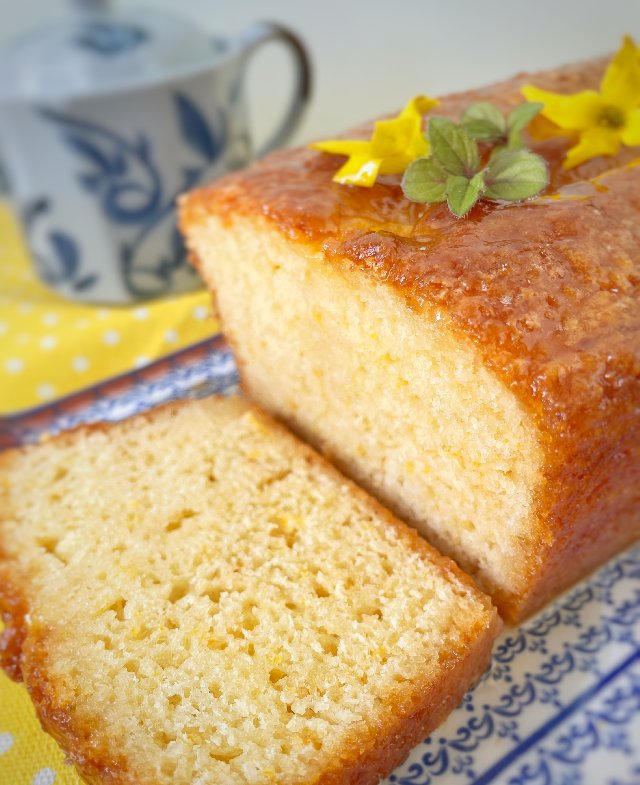Vanilla Sponge Cake of Dreams
Late at night, a friend sends me a photo of a sponge cake. Well, more like a charcoal version of a sponge cake 🙈. "Do you have a foolproof recipe so it doesn’t end up like this?" he asks. And who am I not to share? 😉 Just look, isn't it beautiful? 💛
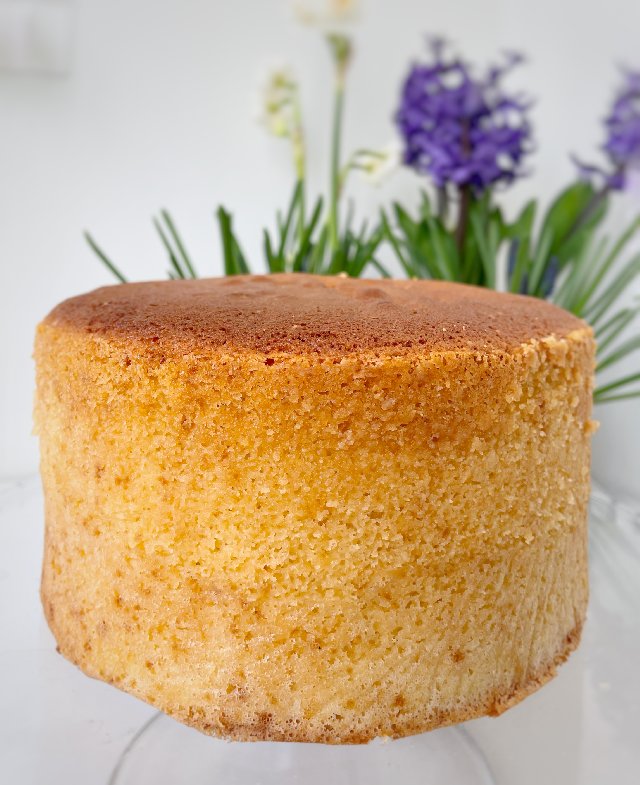
Ingredients
- 4 eggs
- 220g sugar (about 1 cup)
- 80g butter (about 5.5 tablespoons)
- 160g milk (about 2/3 cup)
- 250g flour (about 2 cups)
- 10g baking powder (about 2 teaspoons)
- 1/2 teaspoon salt
- Vanilla sugar
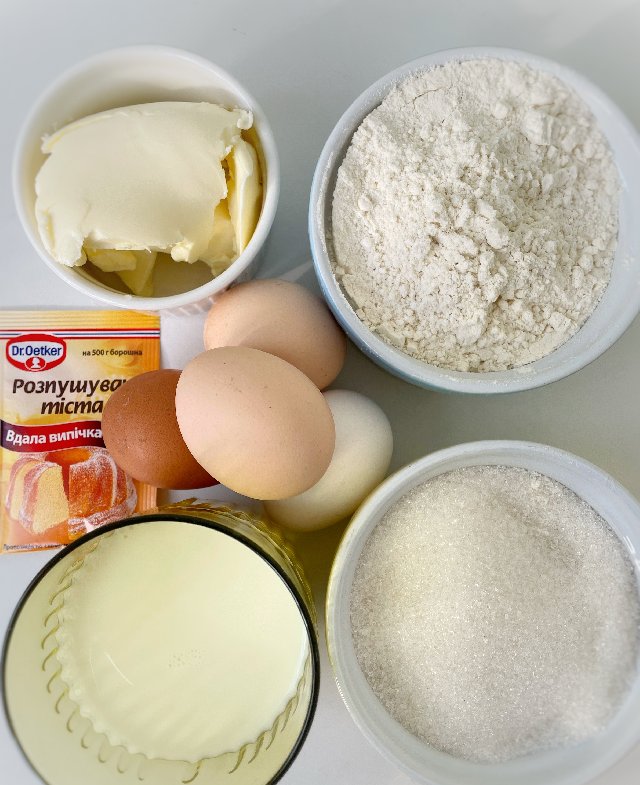
Instructions
-
Preheat the oven to 160°C (320°F). Use the top-bottom heating setting without convection. Start beating the room-temperature eggs at a low speed, gradually increasing it. When the eggs become a uniform foam, gradually add sugar, vanilla sugar, and salt while continuing to beat. Beat until the mixture turns white and fluffy.
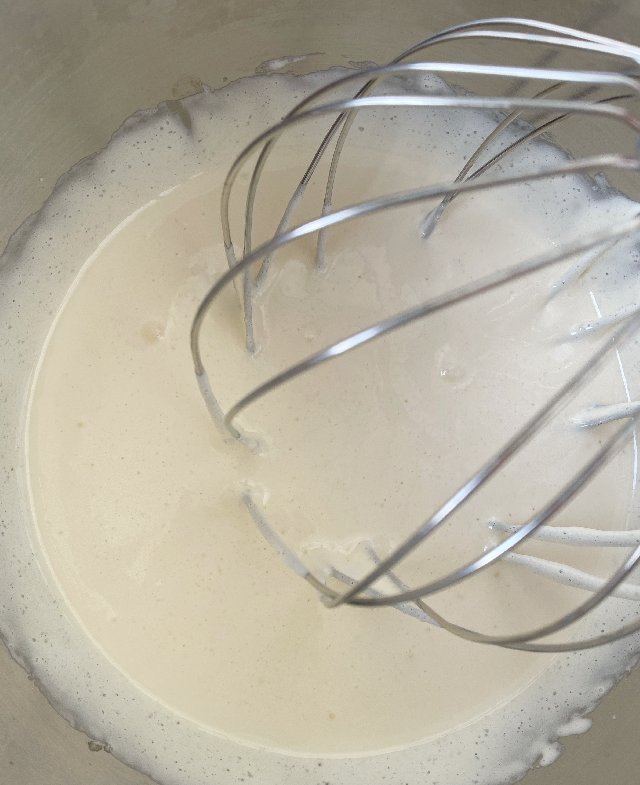
-
Meanwhile, bring the milk with butter to a boil. Sift the flour with the baking powder.
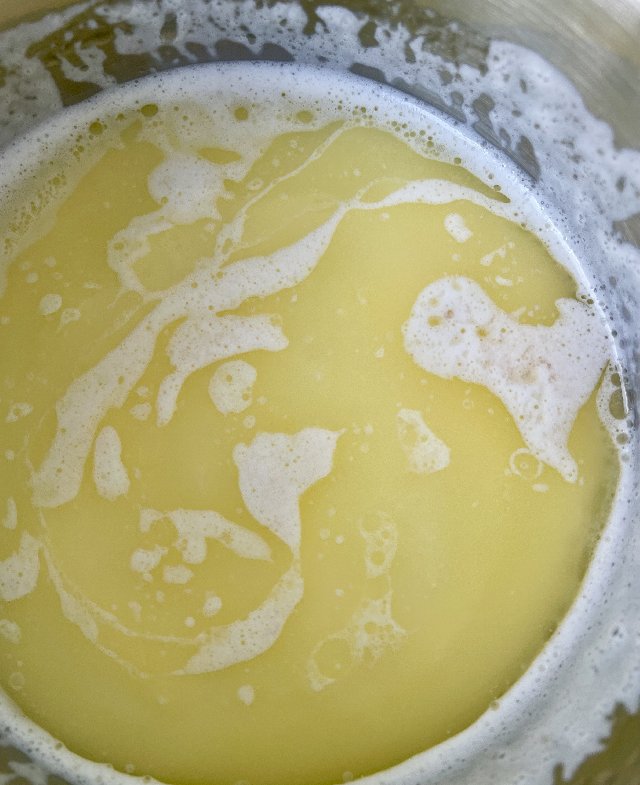
-
Add half of the flour and hot milk to the whipped eggs with sugar. Mix from bottom to top to avoid deflating the batter. Then add the remaining flour and milk, and mix again.
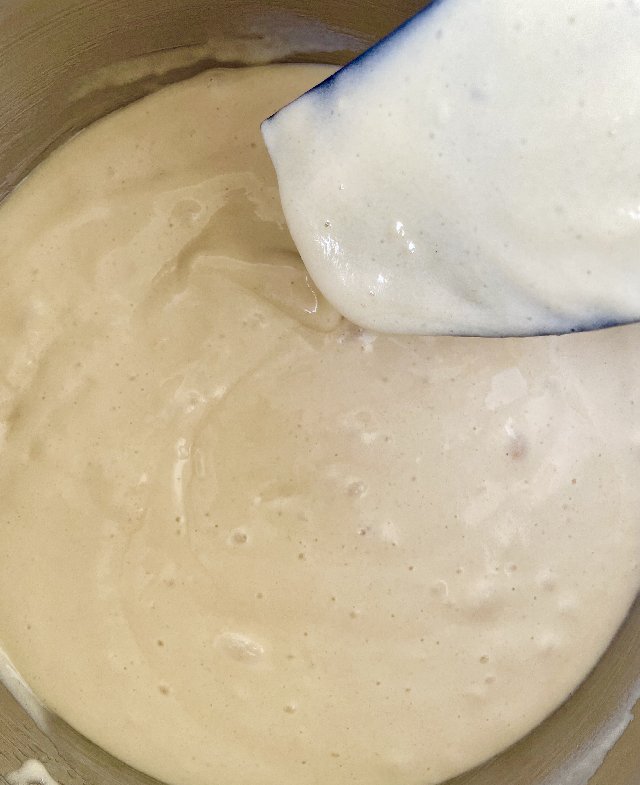
-
For baking, I use an expandable form without a bottom. You can use any form you have. The diameter of your form will affect the height of the finished sponge cake and the baking time. If the diameter is 18-19cm (7-7.5 inches), the finished cake will be about 9-10cm (3.5-4 inches) tall. If you prefer a shorter cake, choose a larger diameter form 😉. If your form lacks a bottom, it’s helpful to cover the base with foil, though the batter is not very runny, so it won't spill out even if you skip this step 🙂.
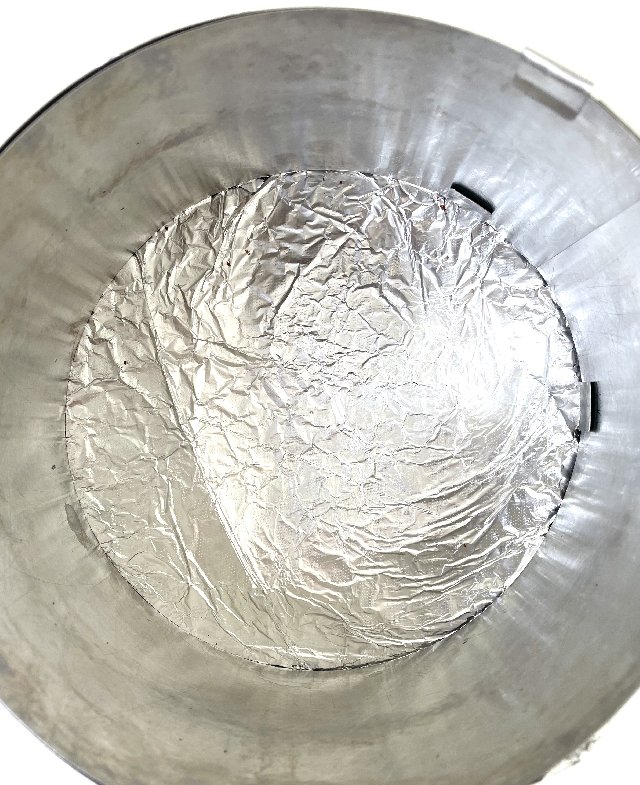
-
Line the form with parchment paper. I fold a square sheet of parchment twice, cut a circle, and make cuts around the perimeter. This way, the parchment fits nicely into the form without creases and folds.
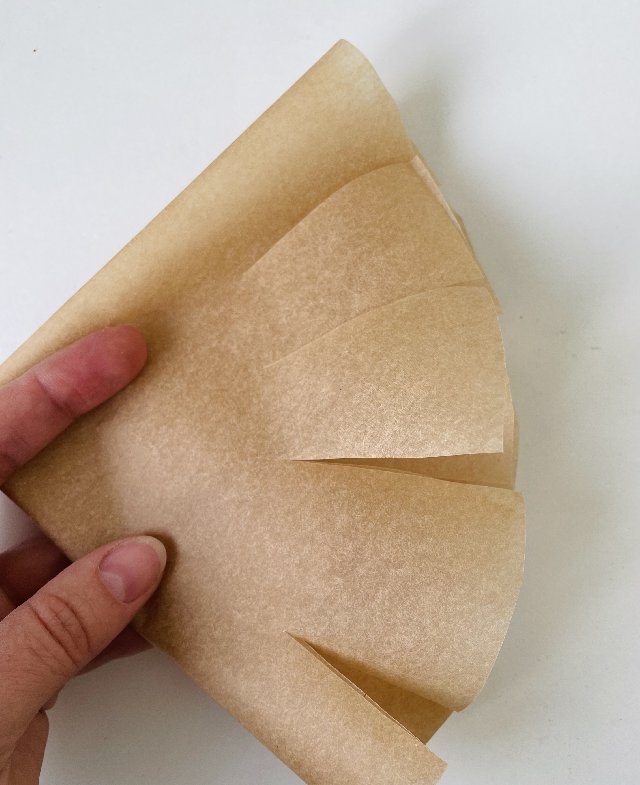
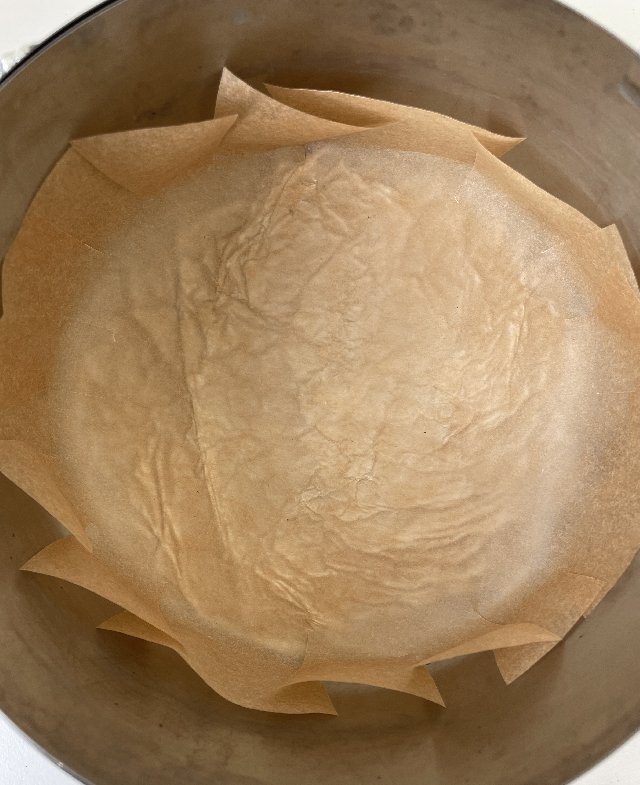
-
Pour the batter into the form and bake. The baking time heavily depends on the size of your form and oven. Generally, it takes about 40-60 minutes, but it might be a bit longer. Check the sponge's readiness with a skewer—it should come out completely dry.
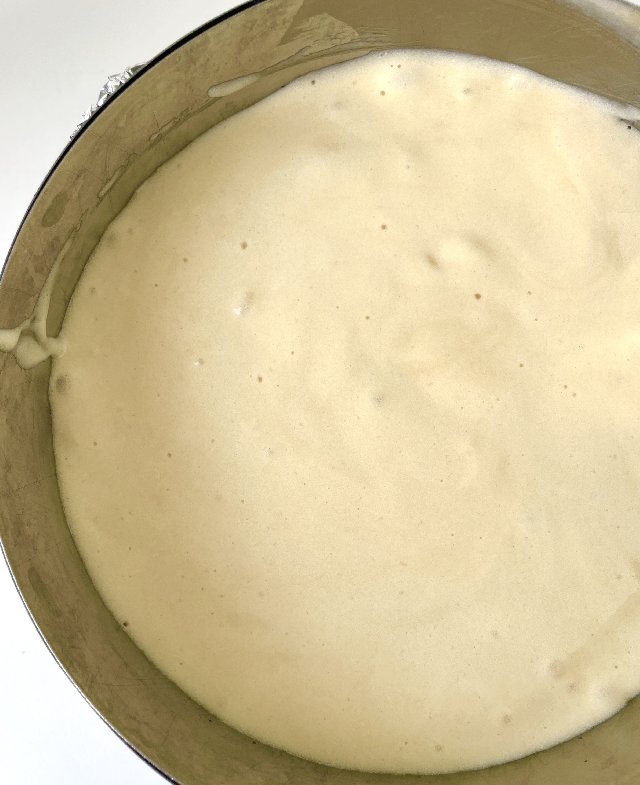
-
Remove the sponge cake from the oven and allow it to cool completely in the form. Then, detach it from the form with a knife, tightly wrap it in cling film, and let it rest overnight in the refrigerator. This step is important as it makes the sponge easier to cut, less crumbly, evenly moist, and with a pleasant texture. Enjoy 🥰
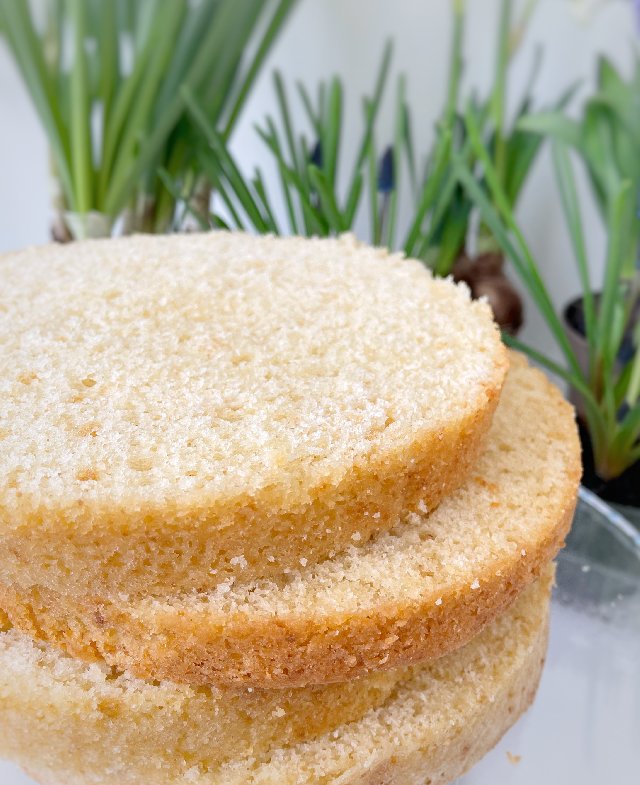
Tips:
💛 Introduce the flour and milk into the egg mixture in two stages; this makes it easier to mix the batter uniformly without deflating it.
💛 Bake sponge cakes at a low temperature, 150-160°C (300-320°F), especially if using a small diameter form and want a taller cake. This ensures even and gradual heating, allowing the cake to rise nicely without forming a volcano shape, and to bake thoroughly.
💛 Do not reduce the amount of flour and sugar specified in the recipe; the dry ingredients create a structure that prevents the cake from collapsing.
💛 This recipe is wonderful because it is very tender and delicious on its own, and it can also serve as a base for other variations:
- Substitute 40g of flour with the same amount of cocoa for a chocolate sponge cake.
- Add the zest of one orange or lemon for a citrus flavor.
- You can add 30-40g (about 1/4 cup) of chopped nuts for a nutty sponge or the same amount of poppy seeds for a poppy seed sponge.
